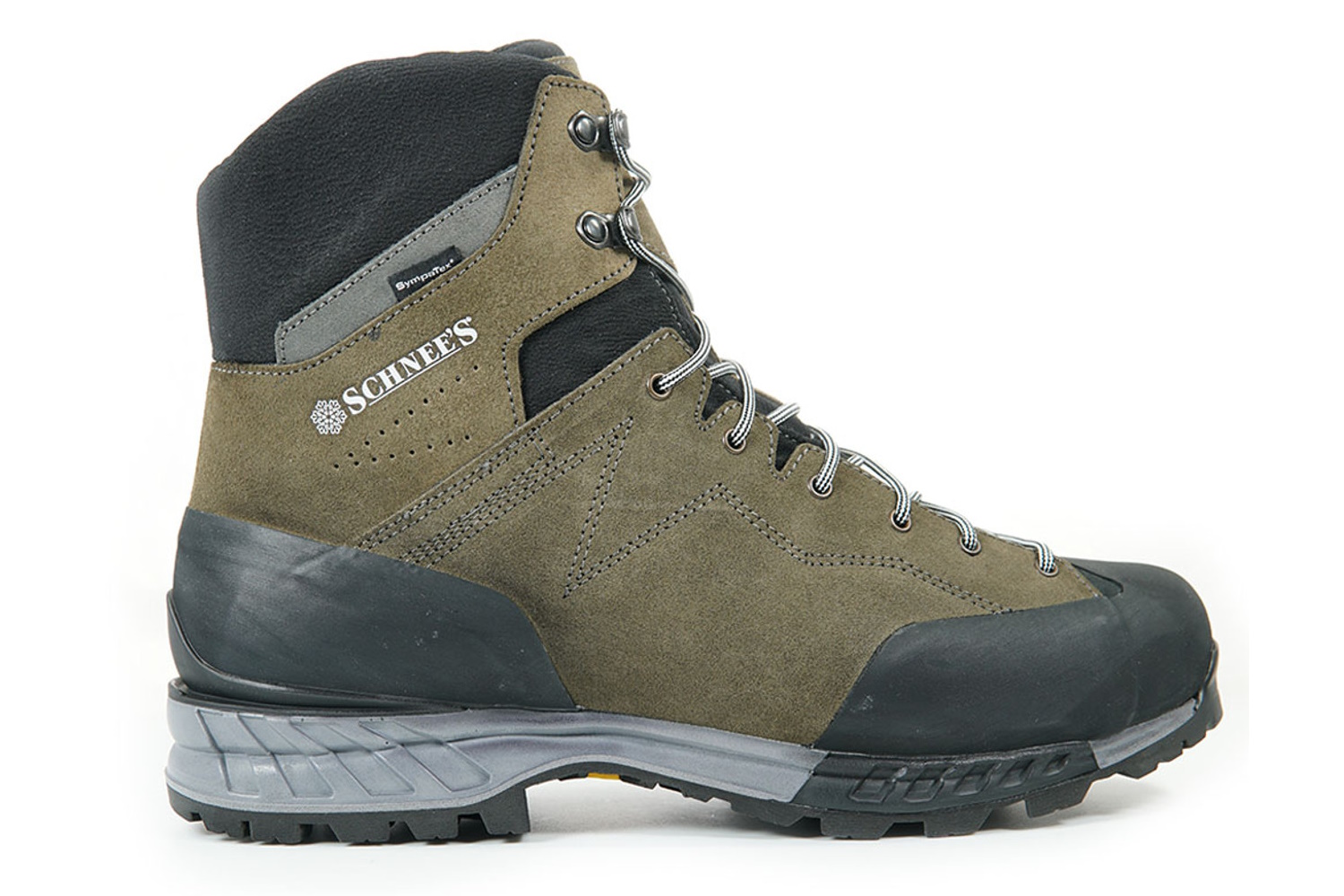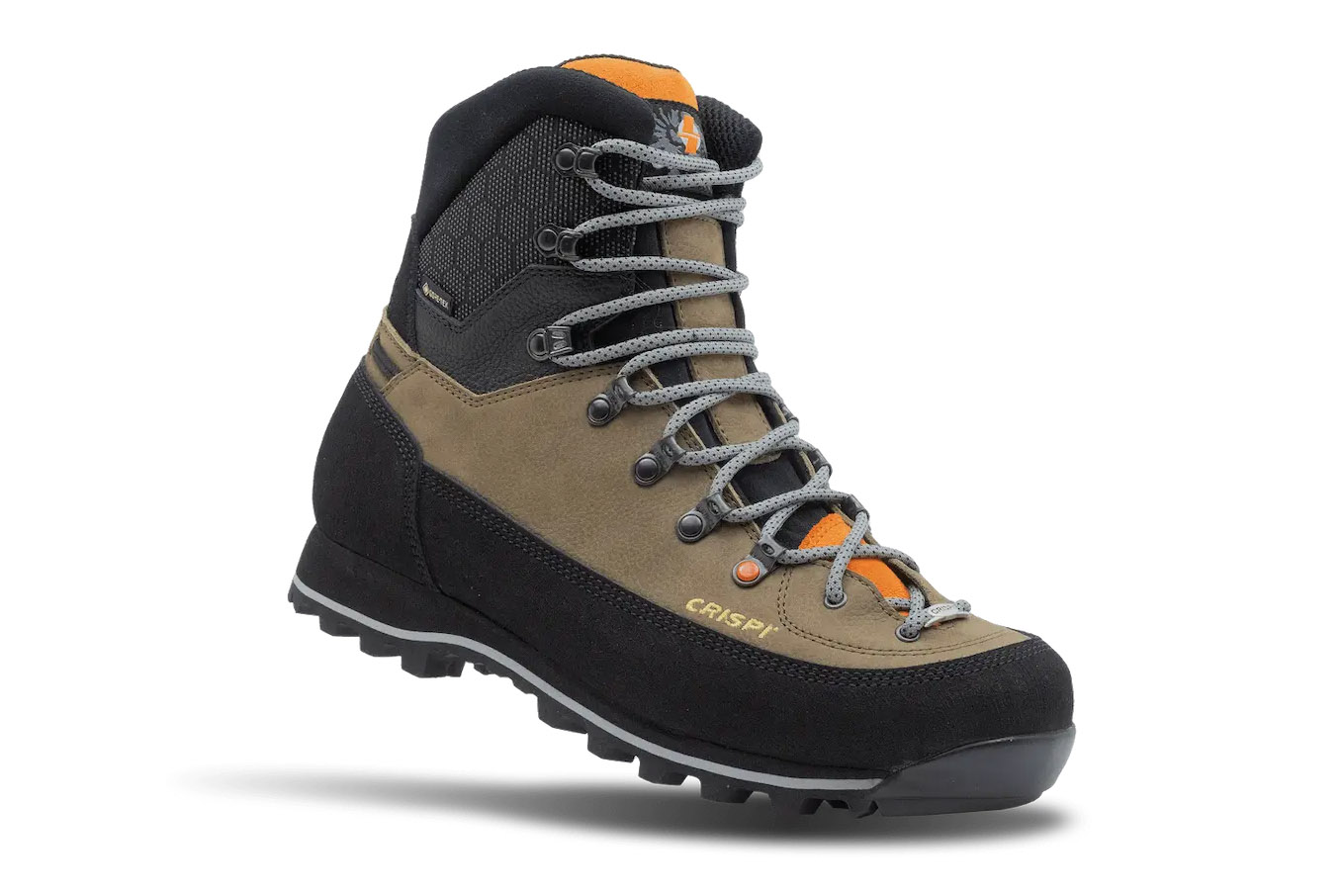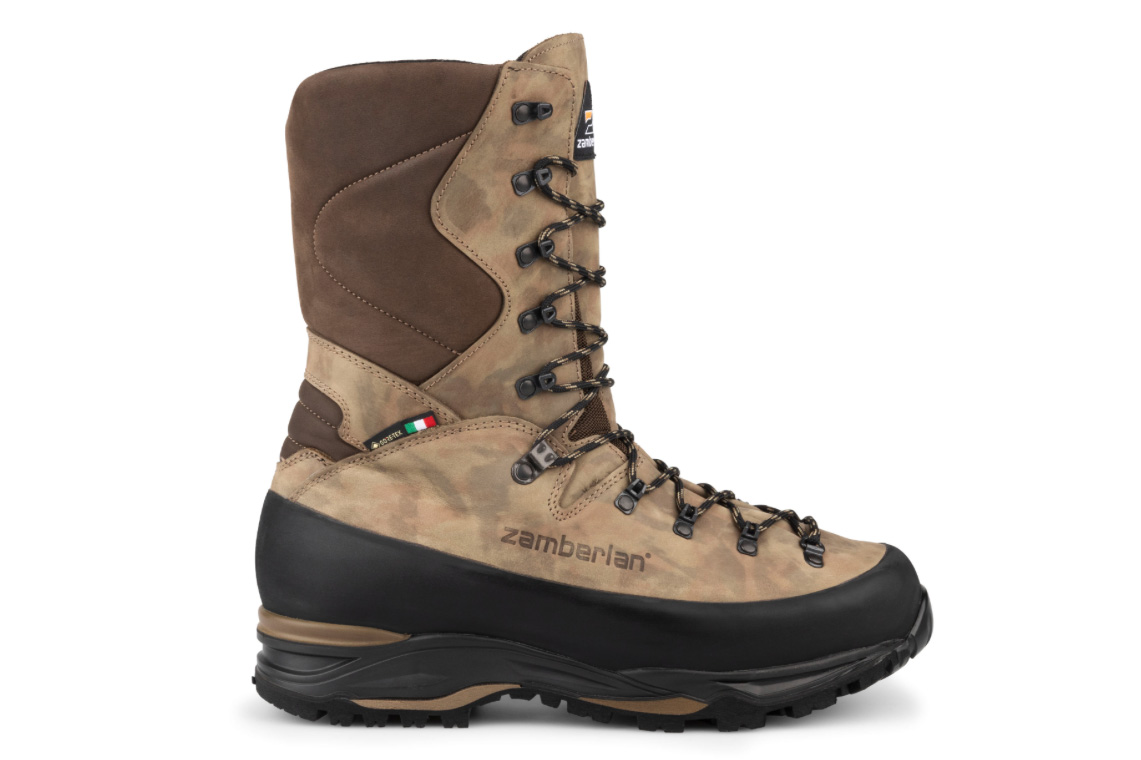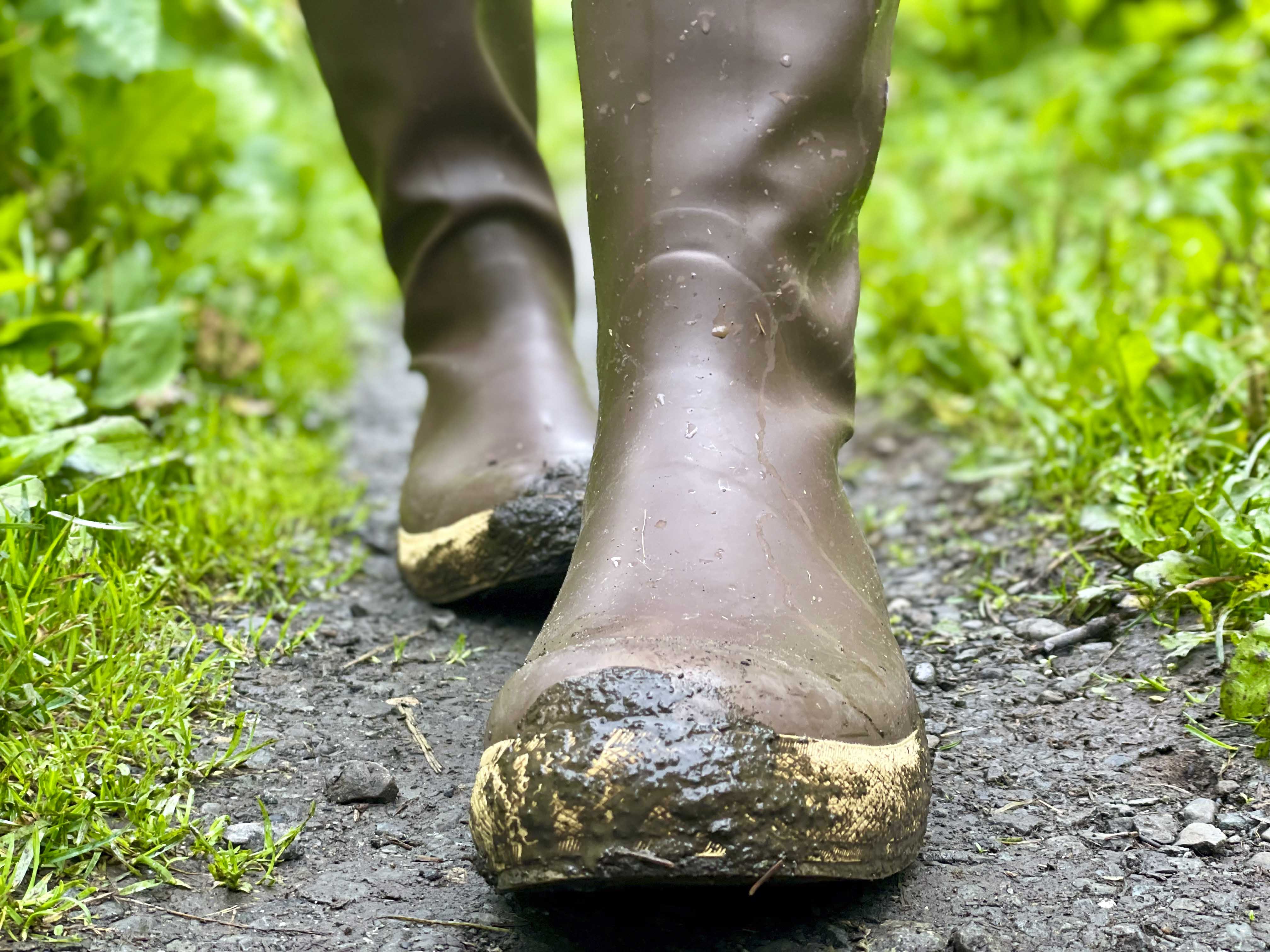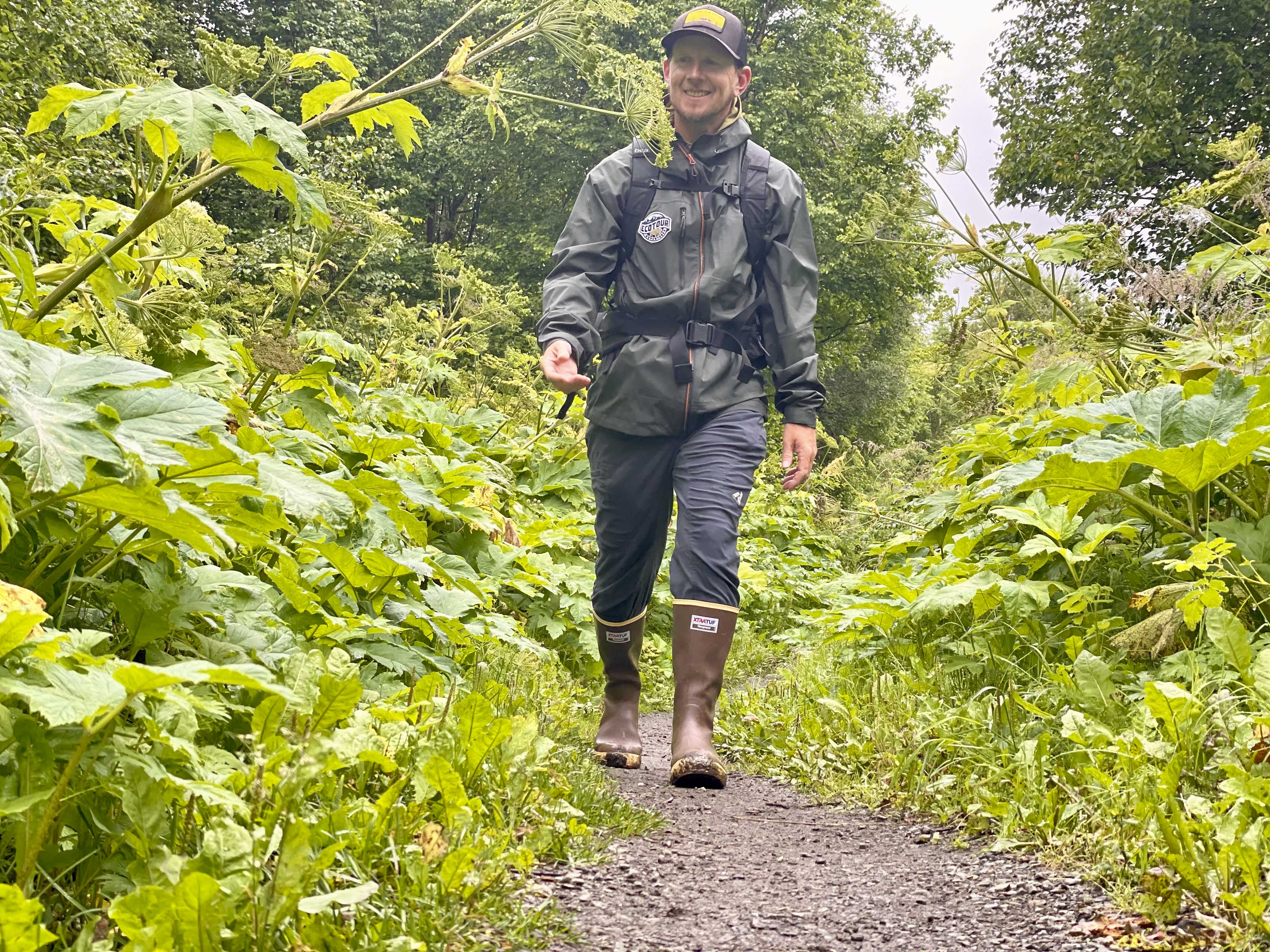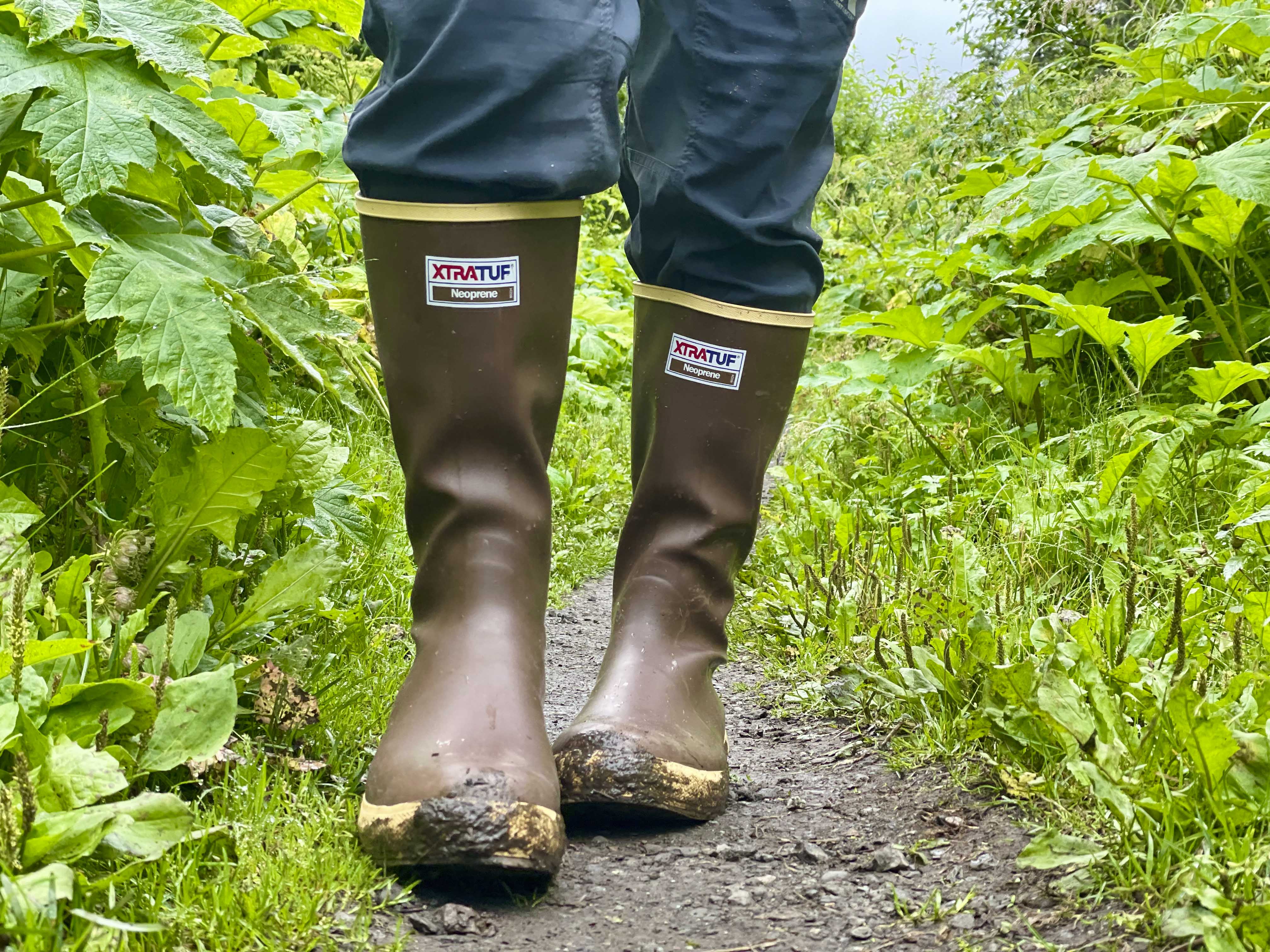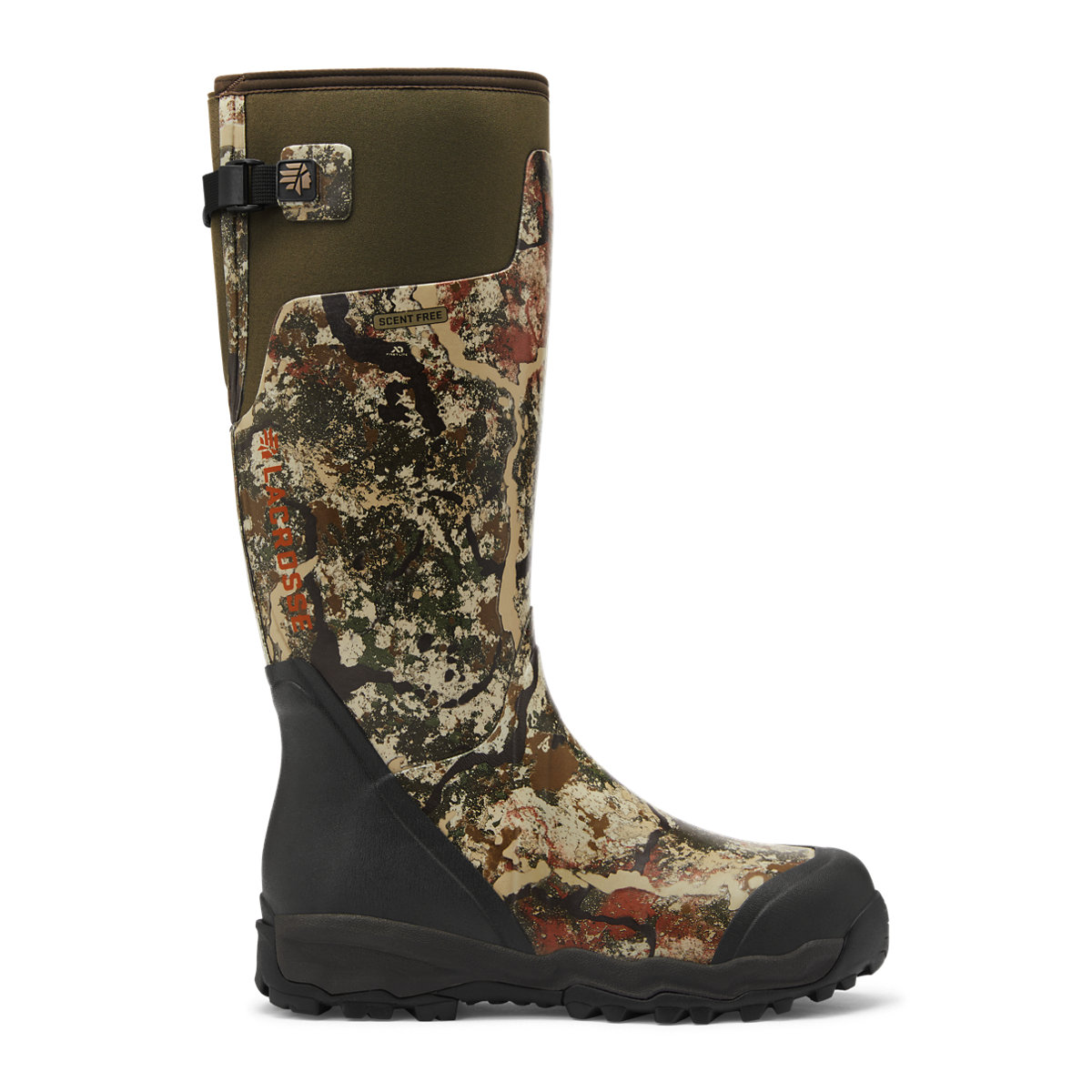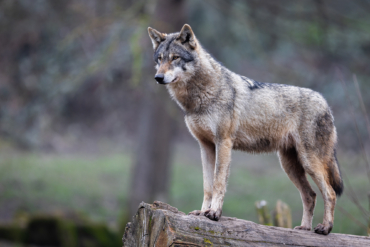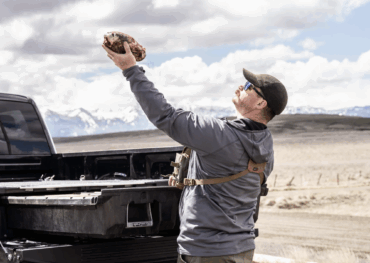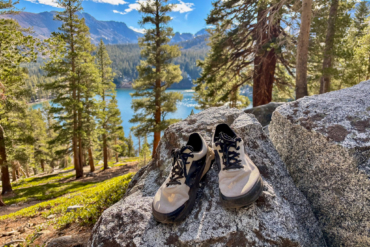Hunting boots may be the most essential gear for many hunters. Nothing can spoil a hunt like foot problems. But great, condition-appropriate hunting boots will keep feet happy and hunters moving through mountains, marshes, forests, or fields.
Apart from being burly and weather-proof, the best hunting boots have focused qualities that generally thrive in specific environments. Those chasing elk across mountains will want very different footwear from duck hunters hunkering in a cold, wet blind. So we’ll offer hunt-specific footwear recommendations below.
A good fit almost always depends on the wearer and the feet they’re packing. Wide, narrow, or in-between, you’ll want to give yourself some time to try on the boots you order and return them if needed to get a perfect fit.
To build this list, I and a team of hunters tested more than 25 pairs of boots over eight years. We tested boots during real-world hunting conditions, ranging from bitter cold winters in Montana to deep muddy trails in Colorado to fields in Nebraska and balmy springtime forests in Tennessee. We’ve put hundreds of miles on these boots, and we’d recommend them to our hunting buddies and friends.
Below, you’ll find the best western hunting boots for navigating mountain terrain, whitetail hunting boots for tree stands and midwestern cold, rubber boots for marshy duck hunting, and upland hunting boots for covering big miles of corn fields and grasslands.
Editor’s note: Updated May 15, 2025, this guide now includes the Crispi Lapponia III, a powerful and light boot for mountain hunting, and the Lacrosse Alphaburly Pro, a versatile rubber boot for early season whitetail and more.
The Best Hunting Boots of 2025
Crispi Nevada GTX
- Height: 8"
- Weight: 1.9 lbs. per boot (size 10)
- Insulation: Uninsulated or 200g
- Upper material: Nubuck leather
Pros
- The rugged sole provides great traction
- Short break-in period
- Very durable
Cons
- Expensive
Danner Recurve
- Height: 7"
- Weight: 3 lbs. (average per pair)
- Insulation: Uninsulated to 400 g
- Upper material: Leather
Pros
- Light
- Mid-flex sole great for everything from mountain stalking to plains hiking
- Available in insulated or uninsulated models
- Great price
Cons
- Not as durable as some heavier boots
- Sole a little soft for extremely steep terrain
Schnee’s Kestrel
- Height: 6"
- Weight: 3.4 lbs. (average per pair)
- Insulation: None
- Upper material: Leather
Pros
- Comfortable
- Lightweight
- Double as a great hiking boot
Cons
- No lace lock system
Crispi Lapponia III
- Height: 8"
- Weight: 1 lb., 5 oz. per boot (size 9)
- Insulation: Uninsulated
- Upper material: Water-repellent Nubuck leather and breathable PUtek Spider Fabric
Pros
- Powerful yet light
- Excellent traction
- Short break-in period
- Nice compromise of sole stiffness
Cons
- Slight heel slip on steep terrain
Zamberlan Sawtooth GTX RR WL
- Height: 11"
- Weight: 2.08 lbs. per boot (size 42)
- Insulation: GORE-TEX Insulation Comfort Membrane
- Upper material: Hydrobloc Nubuck leather
Pros
- Seemingly impervious to water, yet very breathable
- Comfortable out of the box
- Astounding traction
- Warm, yet comfortable for hard exertion
Cons
- Very expensive
- Roomy last may not fit narrower feet
XTRATUF Legacy 15″
- Height: 15"
- Weight: 4 lbs. (average per pair)
- Insulation: Uninsulated (open cell foam and Neoprene retain heat well)
- Upper material: Triple-dipped latex neoprene
Pros
- Completely waterproof, great for standing in rivers
- Durable
- Warm
- Easy on, easy off
- A go-to boot that just works
- Let's be honest, they're cool looking
Cons
- Not comfortable for long-distance walking
LaCrosse Alphaburly Pro
- Height: 18"
- Weight: 4.8 lbs. (pair)
- Insulation: Non-insulated, up to 1,600 grams available
- Upper Material: Neoprene and natural rubber
Pros
- Provides excellent ankle support
- Outsole has fantastic traction
- Durable outsole
- Gusseted upper fits wide range of calf sizes and layers
- Rubber extends high up the boot for durability
Cons
- Price
- Strap is too long and can be noisy
- Difficult to remove
Korkers Neo Arctic
- Height: 16"
- Weight: 5 lbs., 4 oz. per pair
- Insulation: 8 mm of ultra-warm neoprene, fleece lining, EVA midsole
- Upper material: 8mm Neoprene, 100% waterproof vulcanized rubber construction
Pros
- Unbelievably warm
- Comfortable
Cons
- Calf friction can lead to the dreaded sock-sag
Irish Setter Wingshooter 9″
- Height: 9"
- Weight: 2 lbs. per boot (average)
- Insulation: Two options (uninsulated to 400g)
- Upper material: Leather
Pros
- Great for walking long miles
- Flexible sole ideal for fields
- Light
Cons
- Not very supportive
- Traction only OK on steeper slopes
Other Great Hunting Boots We Tested
- Height: 6"
- Weight: 3.1 lbs. per pair
- Insulation: Uninsulated
- Upper material: 2.6mm nubuck leather + AIR8000
- Sole: VIBRAM Foura mountain sole
Pros
- Great support-to-weight ratio
- Excellent traction
- Value price for such high-quality boots
Cons
- The sole is overkill for flat terrain
- Height: 10"
- Weight: 3.3 lbs. (average per pair)
- Insulation: Uninsulated
- Upper material: Terracare full-grain leather
Pros
- Comfortable upper
- Durable
- Light
Cons
- Slow to dry once wet
- Height: 8"
- Weight: 3.3 lbs. (average per pair)
- Insulation: Uninsulated to 1,200 g
- Upper material: Full grain leather and nylon
Pros
- Light
- Quiet
- Versatile
Cons
- Soft sole not good for steeps
- Height: 8"
- Weight: 1.7 lbs. (average per boot)
- Insulation: Uninsulated
- Upper material: Suede and CORDURA
Pros
- Durable
- Stiff sole good for steep terrain
- Modest break-in
Cons
- Some people need after-market insoles
- Can cause blisters if heel slips
Kenetrek EverStep Orthopedic Boot
- Height: 10"
- Weight: 4.8 lbs. (average per pair)
- Insulation: Uninsulated
- Upper material: 2.8mm full-grain leather
Pros
- Excellent traction
- Very supportive
- Helps those with foot problems carry heavier loads
Cons
- Too much support for most hunters, can be restrictive
- Overkill for many types of hunting
Hunting Boots Comparison Chart
| Hunting Boots | Price | Height | Weight (per pair) | Insulation | Upper Material |
|---|---|---|---|---|---|
| Crispi Nevada GTX | $450 | 8″ | 3.8 lbs. | Uninsulated or 200g | Nubuck leather |
| LaCrosse Atlas | $240 | 8″ | 3.3 lbs. | Four options (uninsulated to 1,200 g) | Nubuck leather |
| Schnee’s Kestrel | $390 | 6″ | 3.4 lbs. | None | Leather |
| Crispi Lapponia III | $350 | 8″ | 2.6 lbs. | None | Water-repellent Nubuck leather and breathable PUtek Spider Fabric |
| Irish Setter Wingshooter 9″ | $215 | 9″ | 2 lbs. | Two options (uninsulated to 400g) | Leather |
| XTRATUF Legacy 15″ | $160 | 15″ | 4 lbs. | Uninsulated (open cell foam and Neoprene retain heat well) | Triple Dipped Latex Neoprene |
| Lacrosse Alphaburly Pro | $250 | 18″ | 4.8 | Uninsulated | Neoprene and Rubber |
| Danner Recurve | $240 | 7″ | 3 lbs. | Uninsulated to 400g | Leather |
| Zamberlan Sawtooth GTX RR WL | $525 | 11″ | 4.16 lbs. | GORE-TEX Insulation Comfort Membrane | Hydrobloc Nubuck leather |
| Korkers Neo Arctic | $200 | 16″ | 5.4 lbs. | 8mm of ultra-warm neoprene, fleece lining, EVA midsole | 8mm Neoprene, 100% waterproof vulcanized rubber construction |
| AKU Superalp NBK GTX | $380 | 6″ | 3.1 lbs. | 3.1 lbs per pair | 2.6MM Nubuck Leather + AIR8000 |
| Le Chameau Lite Stalking Boot | $400 | 10″ | 3.3 lbs. | Uninsulated | Terracare full-grain leather |
| Danner Pronghorn | $270 | 8″ | 3.3 lbs. | Uninsulated to 1,200 g | Full grain leather and nylon |
| Kenetrek EverStep Orthopedic Boot | $625 | 10″ | 4.8 lbs. | Uninsulated | 2.8mm full-grain leather |
| Crispi Colorado GTX | $350 | 8″ | 3.4 lbs. | Uninsulated | Suede and CORDURA |

Why You Should Trust Us
We realize hunting boots can make or break your trip. And we want you to have a good hunt. Our recommendations come based on literal decades of experience in the field. Sean McCoy, the lead author on this article, began hunting at the age of 12 and is now well into his 40s. He and our team meet with brands many times a year to learn about new technology and design in the footwear space.
The next step in buidling this guide is customer research. I talk with hunters, hikers, and mountaineers to learn which boots best suit their needs. I comb through consumer reviews to learn about the pros and cons of every boot I can find. I learn about the brands and what makes them unique from each other.
Finally, I and our team put these boots to the test in person. We’ve used the boots everywhere from Alaska to Montana, Colorado, Nebraska, and more. Our goal in this article is to help you find the best hunting boots for your specific needs — just as we would for our friends. For a rundown of what’s out there specifically for women, check out our guide to women’s hunting boots.
This testing process is as rigorous as your hunts, because they probably are pretty similar. I’ve spent hours crossing sketchy sections of snow-covered deadfall. I’ve lugged 100-pound packs of meat miles out of the woods. And like most hunters, I’ve stood silently in bitter cold, wishing my toes weren’t slowly freezing into chunks of ice. All this real-world experience is exactly what we try to share here.
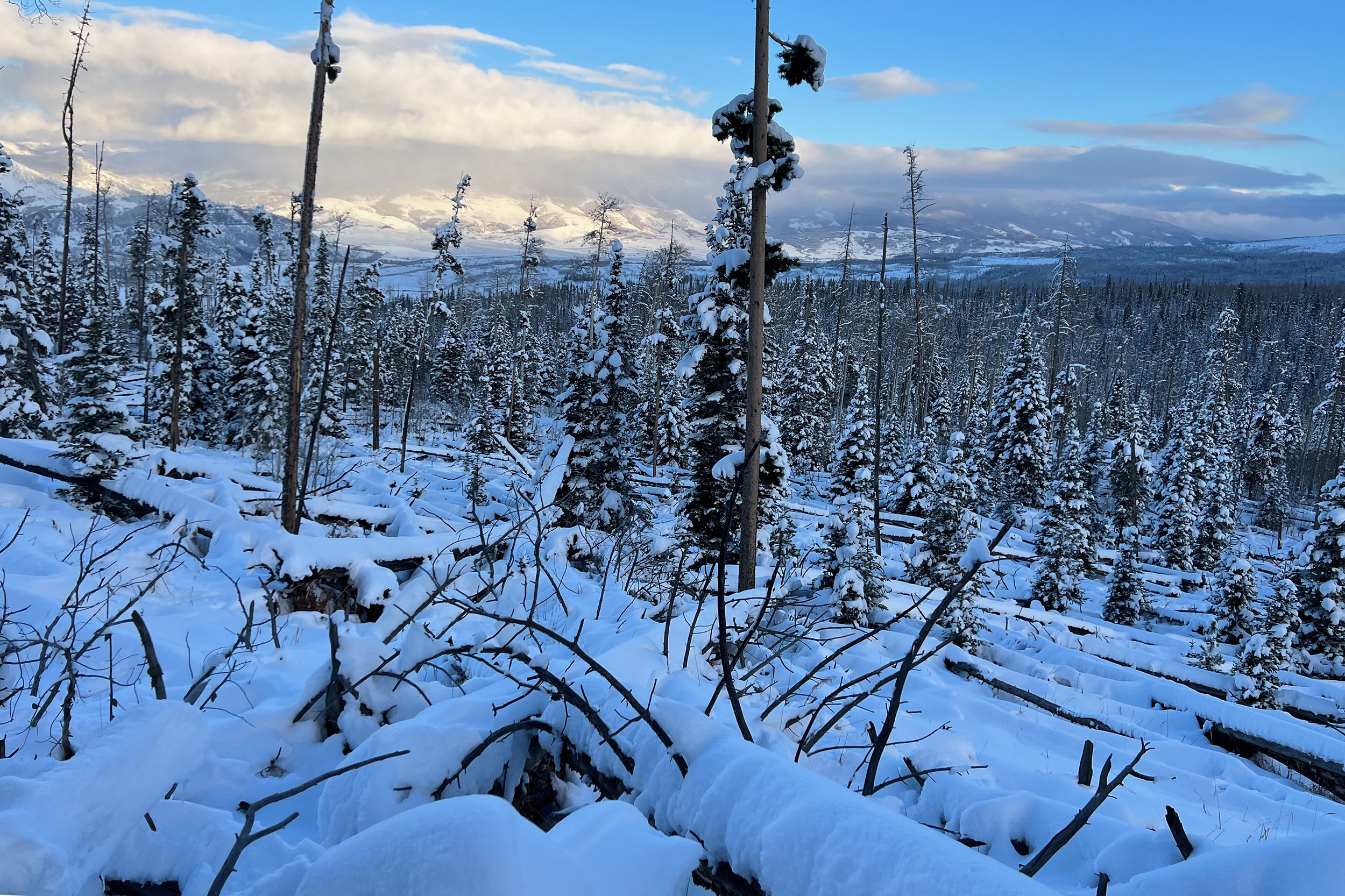
We’d love to hear from you too, so please reach out on social media or contact us by email if you have comments about our selections. Thanks for reading, and have a great hunt!
Buyer’s Guide: How to Choose the Right Hunting Boot
Choosing the best hunting boots comes down to your style of hunting. If you’re waterfowl hunting from a marsh blind in the South, you’re probably not going to wear a pair of insulated Kenetrek boots. Upland hunting in rattlesnake country? Snake boots might be a necessary evil.
Weather, terrain, and habitat challenges are the three dictators of which boot you’ll pull on. Here are a few things that can help you find the best boot for your foot. And if you need more detailed info, check out our 20 tips on buying the perfect boot.

Know Your Size & Boot Fit
Remember those weird metal slide things that you’d step into for sizing? They’re still a helpful tool. Feet can change and grow as we get older, and getting precise measurements at your local REI, Scheels, or sporting goods store can help you choose the right pair.
You might wear a 9 in one brand and a 10 in another or need a narrow or wide size. Be open to trying something outside of your size range.
If you plan on doing long days in your new boots, some foot swelling is probably in your future. Try on boots at the end of the day, as feet tend to be bigger then.
If a boot feels snug all around, a half-size up is probably your better bet. And if they’re tight in the toebox on day 1, you don’t want to experience day 2 in them.
Avoid Hot Spots & Get Your System Down Early
Don’t try on boots with socks you wouldn’t wear while hunting in them. Make sure your socks are seasonally appropriate and fit well with your boot. Take a look at our guide to the best hunting socks for our top recommendations. If you’re looking for a boot to get you through a late-season elk hunt, then focus on insulation and waterproofing.
If you’re looking for an early-season archery boot, put on your lightweight hiking socks and make sure they’re breathable. The biggest thing here is to avoid hot spots that can lead to blisters. You’ll want to nail down your system before heading into the woods.
Is the fit still a bit off? Another thing that can help correct fit is finding an insole that you like. Superfeet is a favorite, and the brand has a plethora of insoles to choose from for various scenarios. Additionally, you can try multiple lacing systems to get the fit of your boot just right.
Where Are You Going?
Are you planning to move fast in steep, rocky, desert terrain? Think breathability, traction, and stiffer ankle support. Going on a late-fall hunt with a heavy pack in the Northwest? Think waterproofness, stability, and warmth. Not sure what types of terrain you’re getting into? An all-around boot with water resistance might be your best bet.
Above all, wherever you’re going, break in your boots before you go. Wear them around the house, to the store, and on some local short trails. Find the hotspots before you’re committed to a major outing. You do not want blisters during a backcountry hunt!
Break-in time can vary from boot to boot. Read reviews. Know what your break-in goal is for your pair of hunting boots, and make sure that boots feel comfortable before hitting the hills. Your feet will thank you in the long term.
Price & Value
Most hunters agree that footwear will make or break your hunt. Hunting boots are not a great place to save a few bucks.
Budget
While there are some hunting boots available for less than $200, most of them just aren’t cut out for the rigors of hunting. Our budget entry, the LaCrosse Atlas, comes in at a little over $200, and for that, you get a pretty good leather boot that will last for a couple of seasons. And most likely, you’ll start seeing other signs of wear. But you won’t get a Vibram sole. Most of these boots are produced in Asia. There’s nothing wrong with that fact; it’s just a reality.
Mid-tier
Step up to the mid-range boots at around $300, and better soles and lighter midsole materials will become common. At $300, you can expect a pair of boots like the AKU Superalp NBK GTX to last multiple hard seasons. But things like grommets and eyelets will still be pretty basic.
Premium
In the $400 and up price range, you’ll find premium hunting boots. And if you plan for big miles, hard mountain hunts, or very severe weather, you’ll thank yourself for not pinching pennies. Premium boots, often made in Italy or Germany, use advanced sole materials with exceptional traction. They use pully-like grommets that reduce lace friction. Midsoles are light yet stiff. And upper materials are extremely durable. At this level, you find brands like Crispi, Kennectrek, Zamberlane, and many more that build boots meant for years of hard abuse.
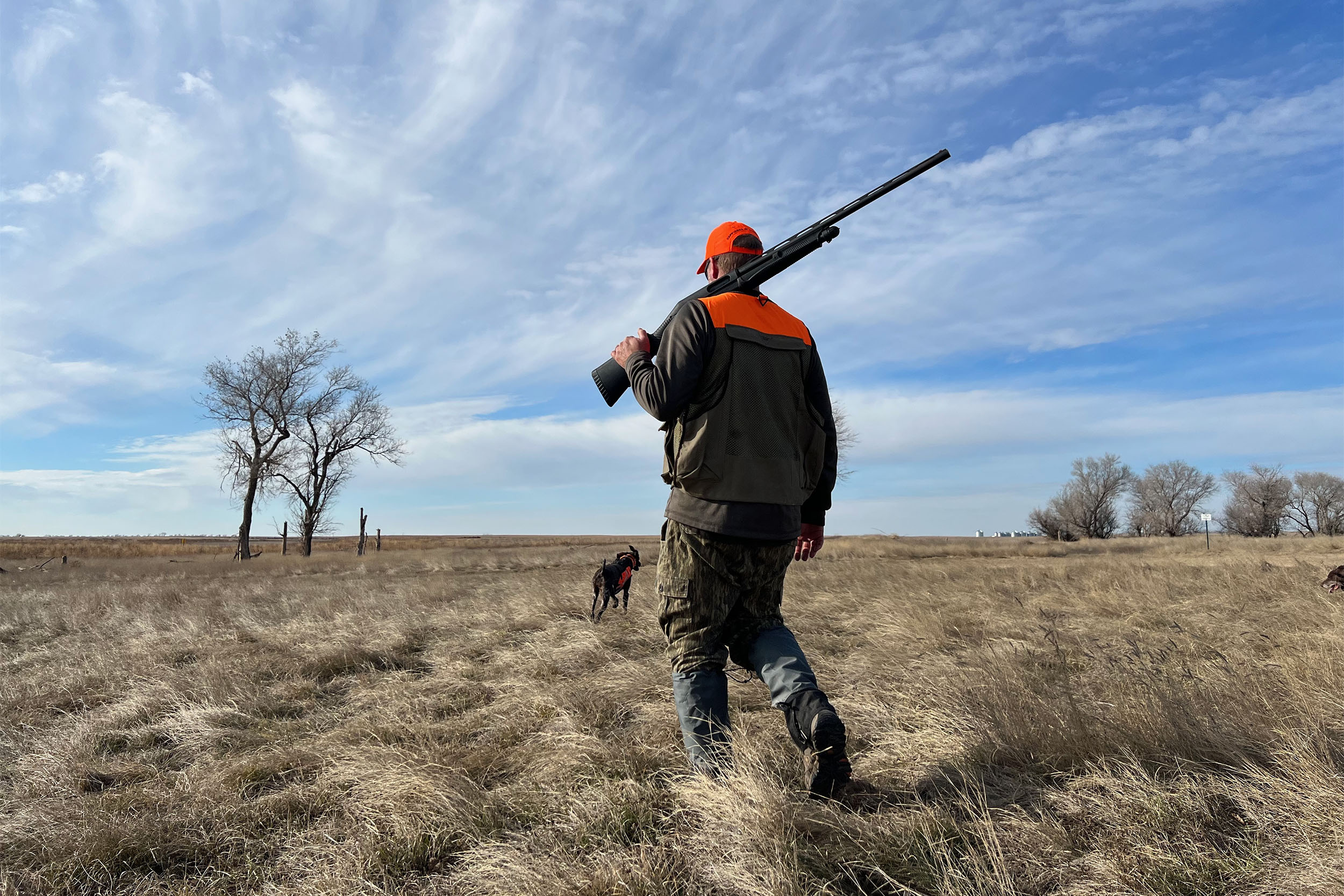
If you plan to spend a lot on any single piece of hunting gear, make it your boots. Your feet will thank you later.
Frequently Asked Questions
All hunting boots use various materials in their construction. The best boots use leather or nylon uppers attached to a supportive midsole, often with some sort of foam for support. Finally, a brand-name outsole like Vibram made from rubber compounds provides a very reliable connection to the ground. Some boots contain insulation like Thinsulate to keep feet warm in cold weather, so consider if you need extra heat during your hunt.
Several brands offer extremely warm boots. Among the warmest hunting boots, the Korkers Neo Arctic, listed above, are rated to -60 degrees F and among our favorites for treestand hunting in cold weather. The Baffin APEX and LaCrosse Alphaburly Pro 18″ 1600G are also great choices for extremely warm hunting boots.
In short, many leather or hiking-oriented boots should fit very comfortably yet be lightly snug when new. That’s because most of these will loosen up as they break in over the first few weeks of use. Plan to buy boots in your regular street shoe size and wear them for several short hikes before your first big days in the field to break them in and find any hotspots before you’re committed to a hunt.



